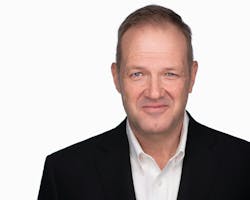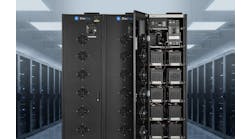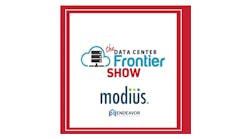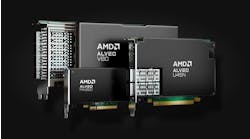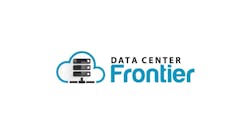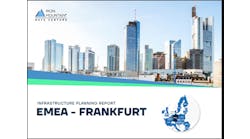Data Center Power Consumption, Energy Management, and the New Energy Landscape
Data centers are the backbone of the modern digital economy, and data is their lifeblood. They host the infrastructure that powers and enables cloud computing, accelerated parallel compute, high-performance computing (HPC), the Internet of Things (IoT), and other transformative technologies. The infrastructure within data centers allows society to integrate these technologies into our daily lives—whether at work during a virtual meeting or sending an email, at home while streaming entertainment, visiting a doctor's office, or checking the balance in a savings account. As demand for digital services grows, so does the energy footprint of data centers. With this surge, energy management, power quality, and sustainability have become critical focal points for operators navigating the evolving energy landscape.
Data centers consume vast amounts of electricity due to the need for constant server operation, cooling systems, and network connectivity. According to industry estimates, global data center power consumption accounts for about 2-3% of total electricity usage. The International Energy Agency (IEA) has reported that global data center energy demand in 2022 was approximately 460 terawatt-hours (TWh), with some estimates suggesting it could increase to 1,000 TWh by 2028.
High-performance computing (HPC), accelerated parallel compute (AI), and edge computing have intensified energy usage. Training advanced AI models requires substantial computational power, often consuming millions of kilowatt-hours (kWh) over several months. Similarly, the increasing number of edge data centers, which bring processing closer to the end user, contributes to overall energy consumption.
Efficient energy management has emerged as a priority for data center operators looking to optimize costs and improve sustainability. Several strategies are employed to manage energy consumption:
Energy-Efficient Design: Modern data centers are built with energy efficiency in mind, incorporating innovations such as liquid cooling and economization techniques, modular designs, energy-efficient server hardware, and highly efficient operational technology (power and cooling systems). The Power Usage Effectiveness (PUE) metric, which measures the ratio of total facility energy to IT equipment energy, serves as a key benchmark for operational efficiency. A PUE close to 1.0 indicates minimal energy waste.
Artificial Intelligence and Automation: The use of AI and machine learning within data centers optimizes energy use by dynamically adjusting cooling, power distribution, and workload allocation based on real-time data. For example, AI can anticipate server loads and adjust cooling requirements to maintain or even improve efficiency.
Renewable Energy Integration: Many operators are integrating renewable energy sources, such as solar, wind, and hydropower, into their energy mix. Hydrogen and solid oxide fuel cells have also seen an uptick in deployment. Power Purchase Agreements (PPAs) allow data centers to secure renewable energy directly, helping to stabilize costs and reduce reliance on fossil fuels.
Battery Energy Storage Systems (BESS): Battery storage systems store excess energy generated during low-demand periods, providing backup during peak loads or power outages. BESS also supports grid stabilization by participating in demand-response programs.
The global energy landscape is transitioning toward decarbonization, decentralization, and digitalization. For data centers, this shift presents both challenges and opportunities:
Decarbonization Goals: Governments, customers, and entire industries are setting ambitious carbon neutrality targets, placing pressure on data centers to align with these goals by reducing their carbon footprint. Beyond using renewable energy, operators are exploring technologies such as carbon capture/storage and heat recovery systems, where waste heat is reused for district heating or other industrial applications, including farming.
Grid Dependency and Decentralization: Dependence on centralized power grids poses risks, especially in regions prone to grid instability. To mitigate these risks, many data centers adopt decentralized energy models, incorporating on-site renewable generation, microgrids, and energy storage solutions to enhance resilience. In other words, on-site prime power and behind-the-meter (BTM) solutions are now daily discussions, with active projects underway.
Digitalization of Energy Systems: Smart energy management systems leverage IoT sensors and real-time analytics to monitor and control energy consumption. Digital twins—virtual replicas of physical systems—are being used to simulate energy performance and identify inefficiencies, sometimes even before they occur.
Power quality is critical to data center operations. Disruptions can lead to downtime, equipment damage, and data loss. Common power quality issues include voltage sags, surges, harmonic distortion, and frequency variations. Mitigation strategies include:
Uninterruptible Power Supplies (UPS): Modern UPS systems provide clean, stable power to protect sensitive IT equipment and, for accelerated compute applications, also safeguard cooling and network elements.
Power Conditioning: Voltage regulators and harmonic filters improve power quality and ensure compliance with regulatory standards.
Real-Time Monitoring: Advanced monitoring systems detect and address power anomalies before they impact operations.
Sustainability is now a key differentiator for data center operators. Stakeholders—including customers, investors, and regulators—demand environmentally responsible practices. To meet these expectations, data centers are embracing innovative sustainability initiatives:
Energy-Water Nexus: Water is widely used for cooling in data centers. Operators are transitioning to water-free or water-efficient cooling systems to minimize their impact on local water resources.
Lifecycle Assessments and Product Environmental Profiles: Operators conduct assessments of equipment and infrastructure to reduce environmental impacts across their lifecycle, from manufacturing to disposal. Data center owners focusing on the carbon intensity of the products they procure can build the same data center as five years ago but with a significantly reduced carbon footprint.
Circular Economy Practices: Refurbishing, recycling, and repurposing IT hardware contribute to reducing electronic waste. Modular designs also allow components to be upgraded or replaced without complete system overhauls.
Green Certifications: Certifications such as LEED (Leadership in Energy and Environmental Design) and ISO 14001/ISO 50001 for energy management systems validate sustainability efforts and attract environmentally conscious customers.
As data centers continue to grow, the industry must innovate to balance rising demand with environmental responsibility. Future advancements may include quantum computing, which promises lower energy consumption, and enhanced AI-driven systems for optimizing energy usage.
Collaboration among governments, energy providers, operators, and technology companies will be essential to foster sustainable growth. Policies promoting renewable energy adoption, financial incentives for energy-efficient interactive designs, and transparent reporting standards can accelerate progress.
The convergence of energy management, power quality, and sustainability is reshaping the data center industry. By adopting innovative technologies and aligning with the principles of the new energy landscape, data centers can ensure they remain resilient, efficient, and sustainable while supporting the rapid evolution of the digital economy.
For more information on how Schneider Electric is helping data center operators scale AI-ready solutions, ensuring any environment is ready for the demands of high-compute workloads, while aligning within a sustainable new energy landscape, visit our website.
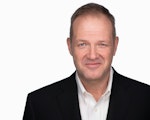
Vance Peterson
Vance Peterson is a Solution Architect at Schneider Electric, and an industry veteran with over 30 years’ experience with end users as well as OEM and Service Providers supporting Mission Critical Facilities and Data Centers. Connect with Vance on LinkedIn.
Schneider Electric's purpose is to create Impact by empowering all to make the most of our energy and resources, bridging progress and sustainability. At Schneider, we call this Life Is On. We are a global industrial technology leader bringing world-leading expertise in electrification, automation and digitization to smart industries, resilient infrastructure, future-proof data centers, intelligent buildings, and intuitive homes. Anchored by our deep domain expertise, we provide integrated end-to-end lifecycle AI enabled Industrial IoT solutions with connected products, automation, software and services, delivering digital twins to enable profitable growth for our customers.

